
| In Ecuador (voluntarily) |
Getting There |
|
|||
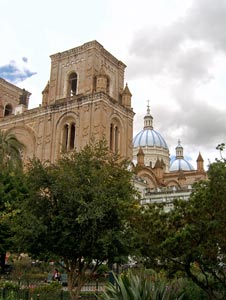 Cathedral viewed from the Main Plaza |
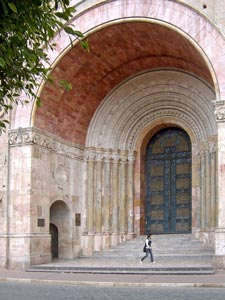 The cathedral doors |
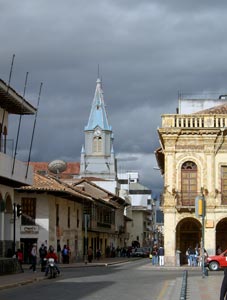 Different architectural styles of Cuenca |
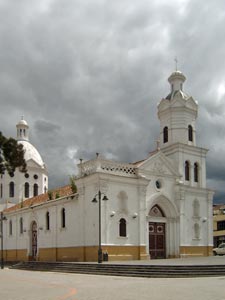 One of many beautiful colonial churches |
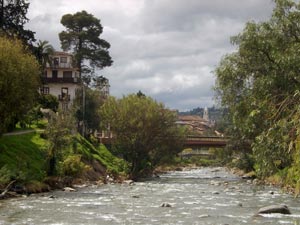 The river flowing through Cuenca |
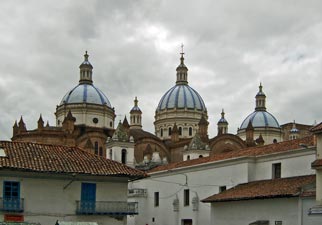 Domes of the cathedral |
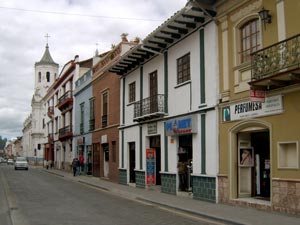 Cuenca streetscape |
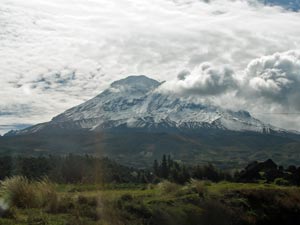 6310m Chimborazu - furthest point from the centre of the earth |
However, our goal was Quito, where we were to spend a week brushing up on our Spanish before heading back to the Ecuadorean Coast and Puerto López and eight weeks of voluntary work, so we caught another bus to travel up from Cuenca along the valley of the volcanos. The week in Quito passed quickly; we studied, visited the World Heritage listed colonial part of the city and played party tricks with Corioli's forces on the line of the equator just to the north of the city. |
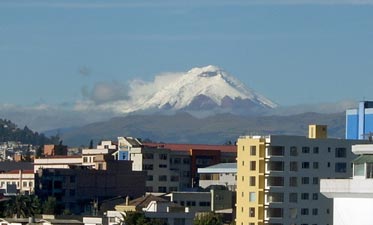 The imposing presence of 5897m Cotopaxi above the skyline of Quito |
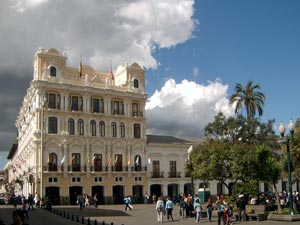 Central plaza of old Quito |
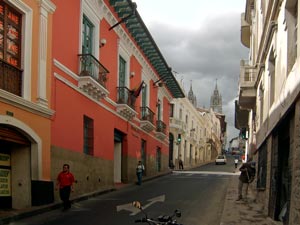 Old Quito streetscape |
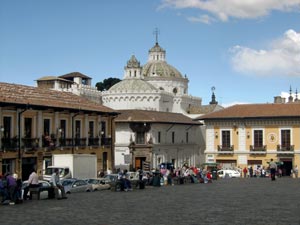 One of several smaller plazas |
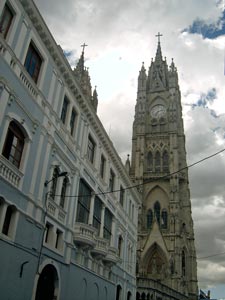 Colonial building and cathedral |
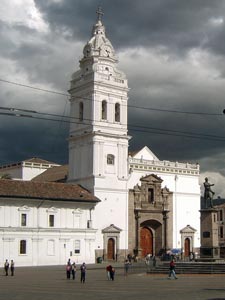 The elegance of colonial Spanish architecture |
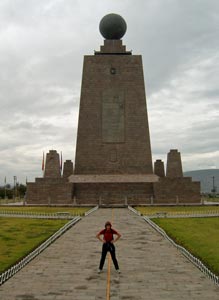 Nello with one foot in each hemisphere at Mitad de Mundo? |
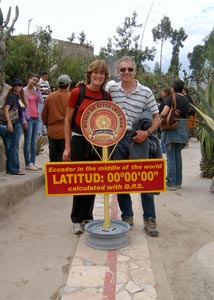 ..... actually not - the real equator is a couple of hundred metres to the north |
|
|
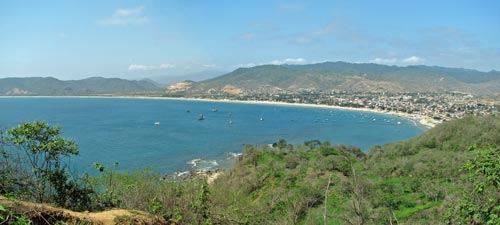 Puerto Lopez |
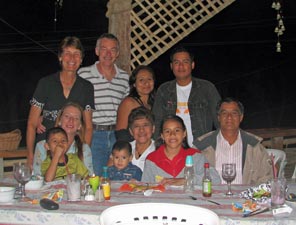 La familia Navarrete Pionce - with a couple of gringo ring-ins |
|
|
||
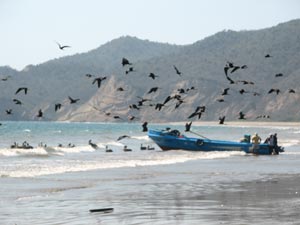 Frigates and pelicans waiting for the catch |
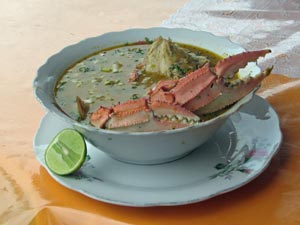 Carmen's wonderful Sopa de Jaiba |
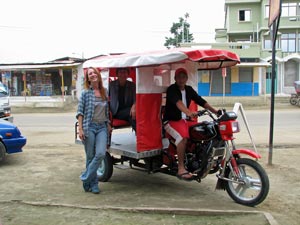 Ronald picks up a couple of chicas gringas in his taximoto |
|
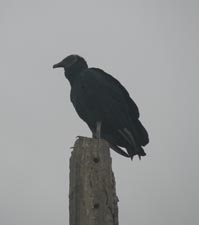 Good morning gringos! |
|
|
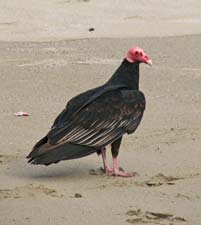 |
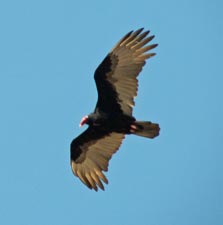 |
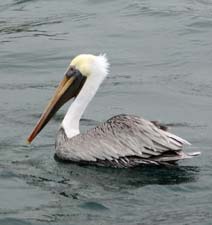 |
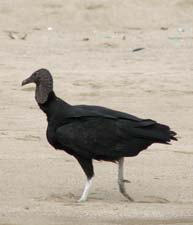 |
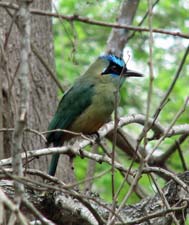 |
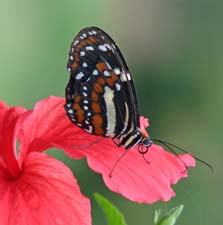 |
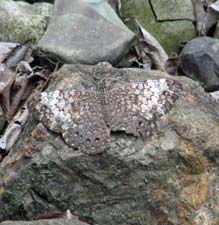 |
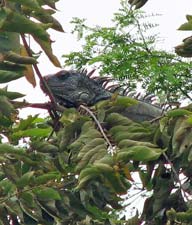 |
|
|||
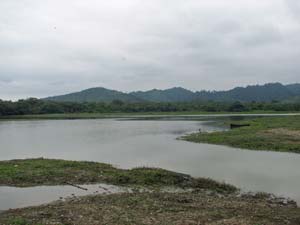 Marshlands at Rio Ayampe |
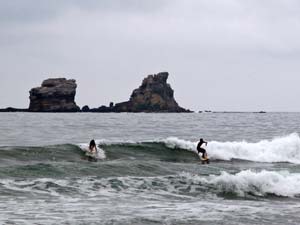 The break at Ayampe |
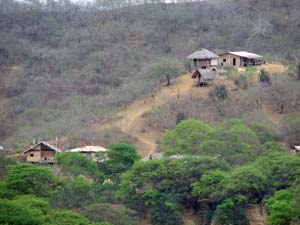 Ecotone of evergreen and deciduous forest at Agua Blanca |
|
||
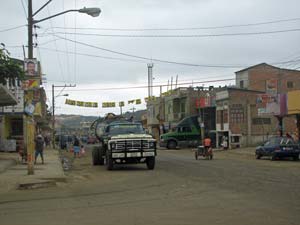 Main street of Puerto Lopez |
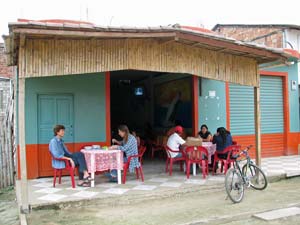 Lunch at Las Tejas |
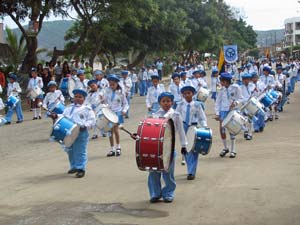 Escuela Choferes at the big parade |
|